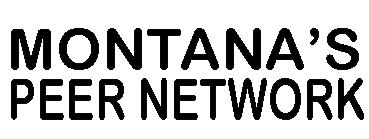
by Nikki Russell, CBHPSS
April 5, 2024
Happiness is a broad term that many people associate with pleasure. When your craving for excitement is replenished, the boredom is filled with fun, or the hunger is satisfied. We want entertainment with relationships, activities, careers, and food. The adrenaline rush or dopamine hit that tells us, " I am doing something that matters to me." This is what many people call happiness, the rush of life, the drama of the story. Who would read a book or watch a movie about a character who spends all day doing mundane" things? Intellectually, this definition of happiness makes sense. However, a definition encompassing the whole person requires more depth and self-awareness. When I look at happiness from an intellectual perspective, it reminds me of my addiction. I am always searching externally for things that fill up my emptiness and reduce my tension. Drinking or doing drugs gave me a rush of pleasure; they allowed me to soften the edges and lose my inhibitions. I can say the same for many of my behaviors before starting recovery; I was trying to squeeze happiness out of everything.
 In the beginning, I needed to heal; the journey began with recovery. I remember purchasing a bike with a basket in the front for my books and a rack on the back to tie my blanket. I would ride my bike to my recovery meetings, arrive an hour early, lay my blanket on the grass, and read until the meeting started. I felt calm, at peace, and contented during those few hours. In those moments, I was not receiving a dopamine hit; I was connected to a part of myself that I was honoring. In those moments, I was not stimulated by something interrupting my chaos; I was embracing my authenticity. If I reflect on exciting times in my life before recovery, I think of the New Year's Eve celebration when I decided I was not an alcoholic. I had spent five years not drinking and proving to myself and my partner that I could manage my life without alcohol and drugs. My best friend and I planned the evening: new dresses, social events, and friends. What was lurking in the darkness of my mind was an escape from the internal pain I had been trying desperately and unsuccessfully to numb. The curve on my life path deviated from the straight and narrow life I had hoped would bring happiness. New Year's Eve was full of glitz and glamour. I was a size two because I had been exercising twice daily, so my silver sequined dress fit the image I was displaying. I desperately wanted the world to see a happy girl. Here is the problem: I was operating from my ego; it was imprisoning my authenticity. It was chasing after external things it thought would make me happy, while my true dreams lay dormant. Exercise replaced alcohol in those five years of sobriety; in the few years before that, a relationship had replaced hard drugs. I spent many years chasing happiness and running from my pain. New Year's Eve would offer synthetic happiness and stimulate the demands of my ego, a confession I would admit years later. Recovery reconnected me to my innocence. The little girl inside, who needed support in early recovery, was seen, heard, and acknowledged as I sat there riding my bike and reading my books in early recovery. There is no excitement, no pleasure, no dopamine hit, just a girl reconnecting to herself.
In the beginning, I needed to heal; the journey began with recovery. I remember purchasing a bike with a basket in the front for my books and a rack on the back to tie my blanket. I would ride my bike to my recovery meetings, arrive an hour early, lay my blanket on the grass, and read until the meeting started. I felt calm, at peace, and contented during those few hours. In those moments, I was not receiving a dopamine hit; I was connected to a part of myself that I was honoring. In those moments, I was not stimulated by something interrupting my chaos; I was embracing my authenticity. If I reflect on exciting times in my life before recovery, I think of the New Year's Eve celebration when I decided I was not an alcoholic. I had spent five years not drinking and proving to myself and my partner that I could manage my life without alcohol and drugs. My best friend and I planned the evening: new dresses, social events, and friends. What was lurking in the darkness of my mind was an escape from the internal pain I had been trying desperately and unsuccessfully to numb. The curve on my life path deviated from the straight and narrow life I had hoped would bring happiness. New Year's Eve was full of glitz and glamour. I was a size two because I had been exercising twice daily, so my silver sequined dress fit the image I was displaying. I desperately wanted the world to see a happy girl. Here is the problem: I was operating from my ego; it was imprisoning my authenticity. It was chasing after external things it thought would make me happy, while my true dreams lay dormant. Exercise replaced alcohol in those five years of sobriety; in the few years before that, a relationship had replaced hard drugs. I spent many years chasing happiness and running from my pain. New Year's Eve would offer synthetic happiness and stimulate the demands of my ego, a confession I would admit years later. Recovery reconnected me to my innocence. The little girl inside, who needed support in early recovery, was seen, heard, and acknowledged as I sat there riding my bike and reading my books in early recovery. There is no excitement, no pleasure, no dopamine hit, just a girl reconnecting to herself.
I call my childhood wounding my darkness. I have learned that trauma is not what happened to me but what I experience because of it. One of my traumas is abandonment. How I can experience this is negative programming that convinces me I am not worthy of love. It can show up in my day-to-day moments as unconscious patterns that convince me I do not fit in or self-sabotage. My patterns came from programming due to trauma and informed my behavior. I call this programming EGO. The ego is an internal and unknown drive to specific behaviors, like drinking. I often say, “The thinker is the drinker.” This means that the true and pure part of me is not judging the behavior but has given authority to a more daring part of me that can protect a more vulnerable aspect. My healing has expanded the pure part of me slowly over time; I call this part of me “the light.” In early recovery, I was discovering what this was. I had these bubbles of happiness that would appear inside me, but would not last that long. These bubbles expanded through forgiveness, meditation practice, and learning about myself until they became big enough to withhold my whole self. I began to be able to separate my wounds (darkness) from the person I was always meant to be(lightness). My dreams started to rise to the surface as I was not entangled in my programming. I stood outside of them and observed how they were ruling my life. From that point, I could begin to untangle them individually, allowing me to act as the authority of my life rather than being lost in the darkness.
Recovery has been a “revealing journey.” Once my healing process built momentum, it lit the path toward recovery, revealing unconscious patterns and allowing me to live my best life. Slowly, my ego fades into the light and integrates into life. They say that the ego is a terrible master but a great servant. Our natural state is calm and peaceful. I can think of ego as always wanting the carrot dangling out in front of me that constantly chases happiness, thinking it is closer, but it never reaches it. Suffering lives in the desire for something instead of being at peace with the moment. My happiness began when I realized that I had created everything I had at that moment. This meant I had the power to change it, but even more so, I could embrace it. Trauma has a purpose. It allows me to grow and become a lighter version of myself and provides the drive to seek internal meaning. Chasing happiness cannot fulfill me because it takes me away from my authenticity. Instead, I go inside to the deep reservoirs of myself, and where I think I will find more darkness, the light appears, revealing the internal pursuit of happiness.

